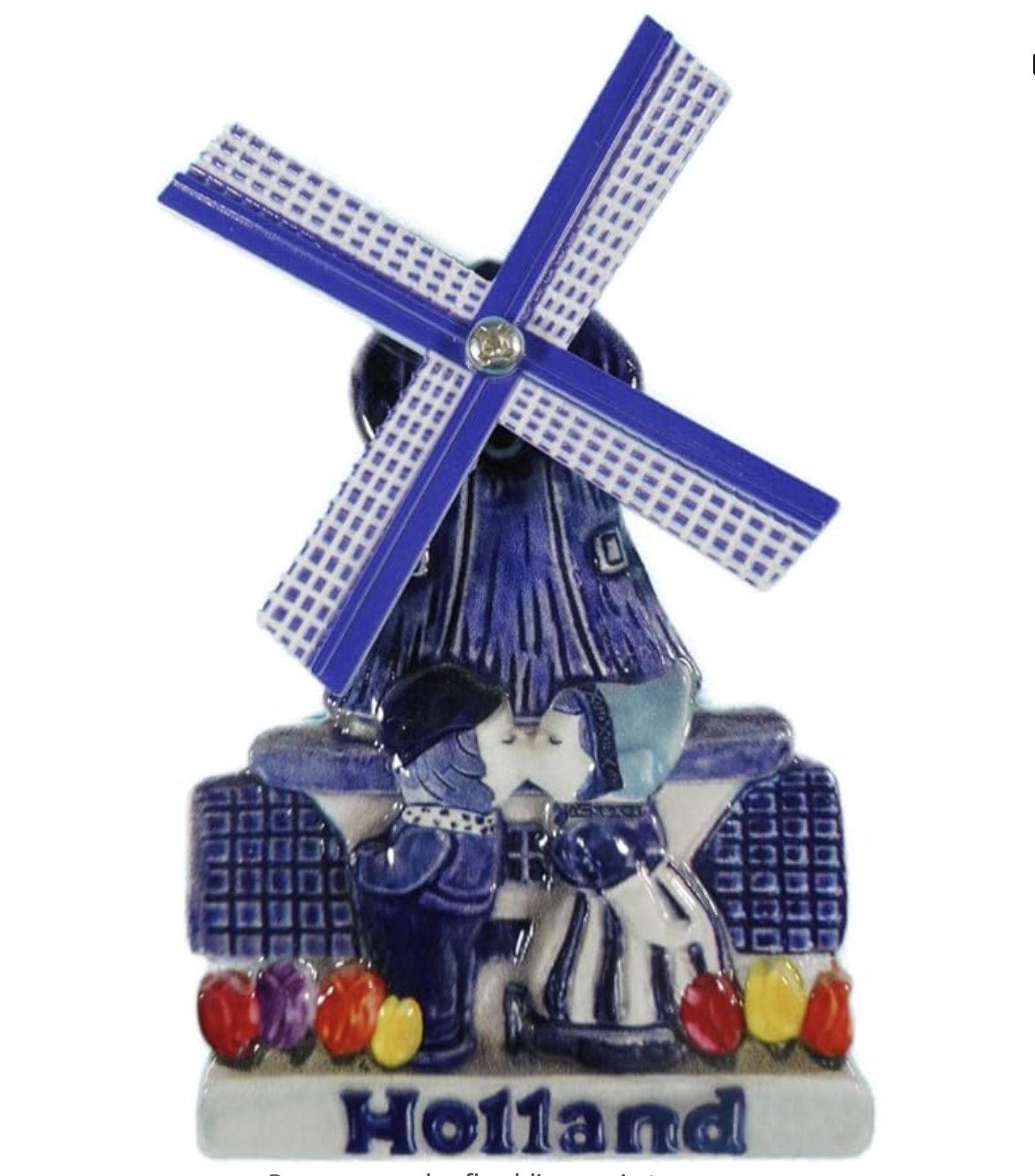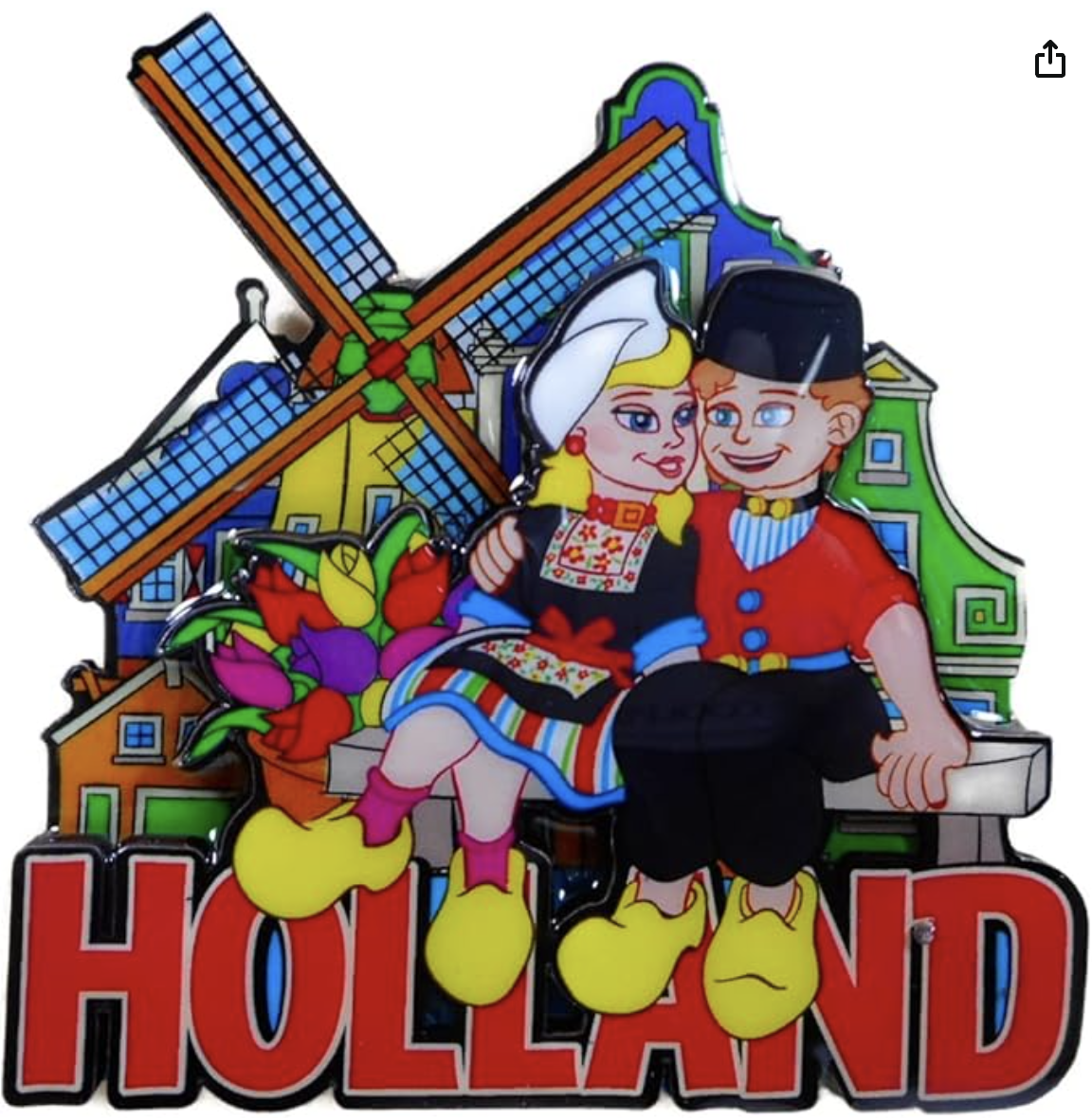
How are Dutch people represented in media? This question raised when looking at the doll and while doing some research regarding the traditional costume.
If we take a look at the previous step in this tour, we notice how Dutch people are portrayed in a certain way. This means women being dressed in traditional costumes. A quick search on Amazon.com for Dutch souvenirs, immediately leads to the following results:


In the second image, Holland Magnet 1, you see the traditional Volendam costume. You can see different aspects from the costume such as the Kraplap, the Blood Coral Necklace and the Lace Hul. Together with the windmills, tulips and typical houses, this can be seen as an perfect example on how Dutch women are portrayed in foreign media.
During this tour, we have also seen how there are very few women left in the Netherlands who still wear the traditional attire. This makes a very interesting research topic to why foreign media are still using this image as the image for the average Dutch woman. This can lead to an homegeneous image of Dutch people and culture whereas the opposite is true. Even though the Netherlands are a fairly small country, one can spot many cultural differences. The traditional costume is only worn in small parts of the Netherlands and differed from town to town. To create an image, in 2003, only 50 women and 1 man still wore the traditional costume with the youngest person being 62 (Minderhoud, 2004). In 2024, we can imagine that there are almost no people left still wearing the costume. But why is the traditional costume still a huge image for Dutch people in media nowadays? If you would like to get some answers regarding this question, proceed on to the next tour where we will also talk about how our little doll can reflect a society.